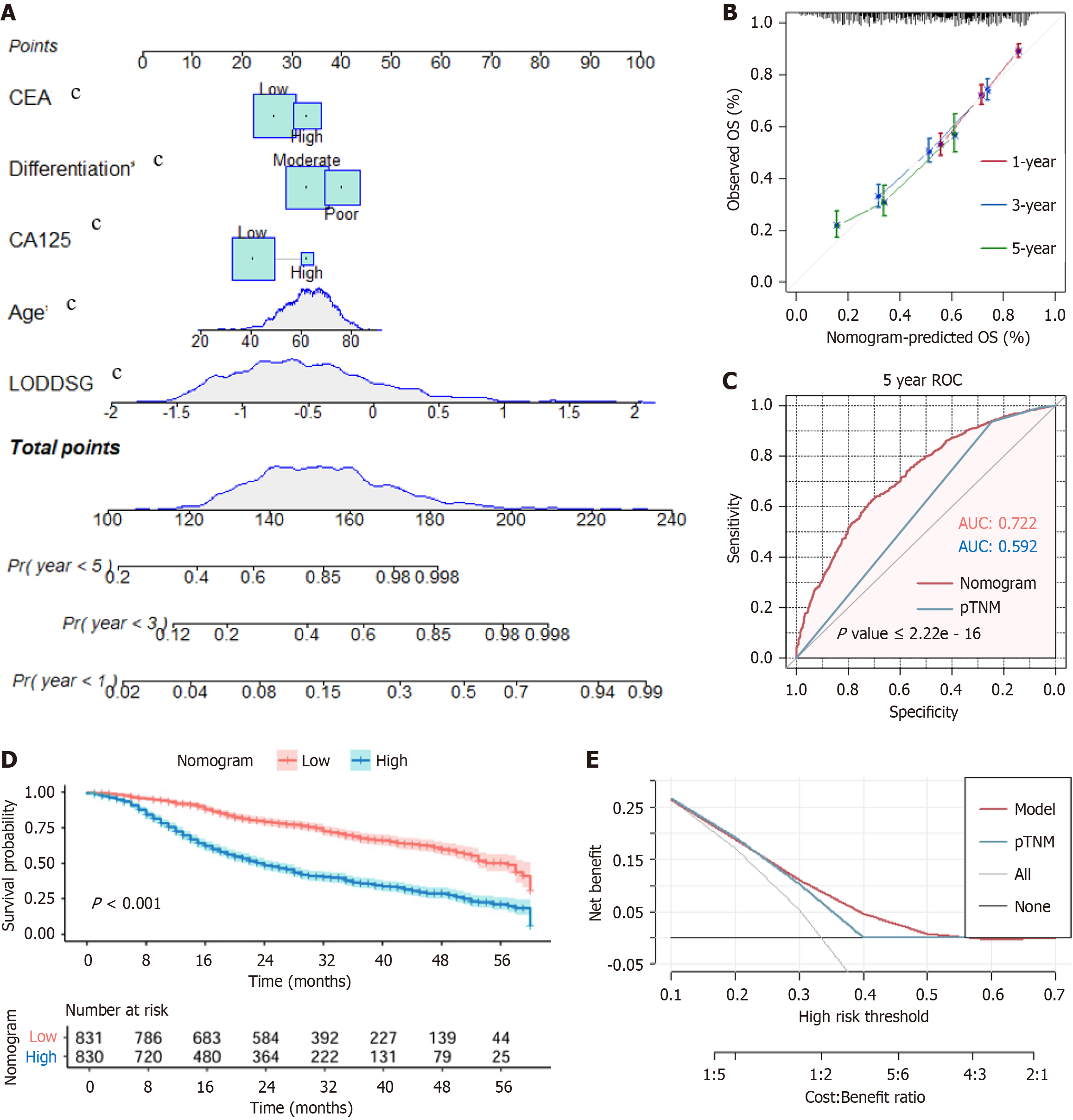Copyright
©The Author(s) 2025.
World J Gastroenterol. Jun 7, 2025; 31(21): 107029
Published online Jun 7, 2025. doi: 10.3748/wjg.v31.i21.107029
Published online Jun 7, 2025. doi: 10.3748/wjg.v31.i21.107029
Figure 4 Construction of a nomogram model to predict the prognosis of gastric cancer patients based on log odds of positive lymph nodes, tumor differentiation, and other independent risk factors.
A: Nomogram; B: Calibration curve of the nomogram; C: Receiver operating characteristic curves for the nomogram and pathological tumor-node-metastasis staging systems; D: Kaplan–Meier curve of overall survival for the high-risk and low-risk groups based on the nomogram; E: Decision curve analysis comparing the nomogram with the pathological tumor-node-metastasis staging system. (P < 0.005). LODDS: Log odds of positive lymph nodes; CA: Carbohydrate antigen; CEA: Carcinoembryonic antigen; pTNM: Pathological tumor-node-metastasis; OS: Overall survival; ROC: Receiver operating characteristic; AUC: Area under the curve.
- Citation: Deng MC, Chen K, Bao QM, Huang YX, Zhang CK, Zhong YK, He HY, Zu D, Liang C, Liu HD, Hu YC, Liu GX, He YH, Wu WX, Zhou JN, Teng YS, Jing J, Shi Y, Chung CYS, Yu CH, Du YA, Ye Z, Cheng XD. Evaluating log odds of positive lymph nodes as a prognostic tool in differentiated gastric cancer: A retrospective study. World J Gastroenterol 2025; 31(21): 107029
- URL: https://www.wjgnet.com/1007-9327/full/v31/i21/107029.htm
- DOI: https://dx.doi.org/10.3748/wjg.v31.i21.107029









